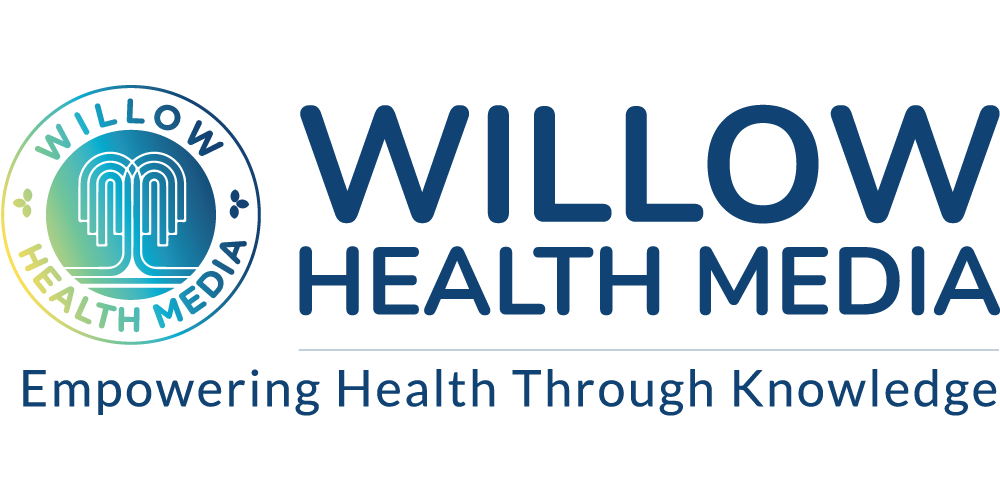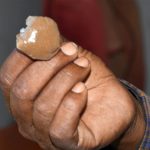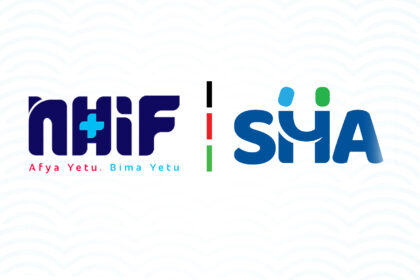The Social Health Authority (SHA) was rolled out on October 1, 2024. But what is the situation so far? Are patients registering? What is the current state of maternal health, dialysis, and cancer care? How is Primary Health Care performing, and, most importantly, emergency care?
Dr MERCY KORIR, host of Lifeline Dialogues, spoke to Dr BRIAN LISHENGA, the chair of the Rural-Urban Private Hospital Association (RUPHA)-which has been closely monitoring the process, on a variety of burning issues…here are the abridged excerpts.
Dr Korir: What has been the impact—both positive and negative— since the Social Health Authority rolled out six weeks ago?
Dr Lishenga: It has been a mixed bag, a real rollercoaster. We got off to a very difficult start. I would say the first two weeks were the toughest. There was a lot of confusion, with patients missing care and healthcare providers not knowing how to proceed. We faced a lot of uncertainty about how things were supposed to work. By week three, some of the critical issues began to emerge, and over the last three weeks, there’s been a more concerted effort to address specific pain points.
As an association, we’ve been closely analyzing the situation as objectively as possible. Our goal has been to filter through the noise and focus on the key issues so we can provide feedback that can help make the necessary changes.
Dr Korir: What went wrong in those first few weeks?
Dr Lishenga: The words that come to mind are “transition management.” The perception was that SHA could replace the NHIF (National Health Insurance Fund) system overnight, but NHIF has been in place since 1966. This transition was never going to be that simple.
The main issue was the untested provider portal, which was supposed to handle transactions between healthcare providers and SHA. While it worked well in controlled environments, it collapsed in the real-world setting.
Before SHA’s rollout, NHIF had about 8,800 facilities involved. After the introduction of SHA, that number ballooned to around 12,000 to 13,000 facilities. We had 4,000 facilities that had never interacted with NHIF, SHA, or any of the systems in place. These were completely new players who needed guidance. On top of that, there were 56 million Kenyans who had never interacted with this system either. When you combine these issues—the scale, the new players, and the unfamiliarity with the system—you can see how complex this transition was.
Personally, I believe we should commend SHA for what they’ve done. Given the complexity of the situation, things could have gone much worse.
Dr Korir: Have there been any improvements or successes in recent weeks? What do you see as the key indicators?
Dr Lishenga: By October 10th, we had released our first scorecard, based on 18 metrics. We saw a score of just 19%. That’s an “E”—a total failure. At that point, there were serious issues like patient verification, and eligibility, and, most alarmingly, less than 10% of healthcare providers were able to log into the portal.
However, in our most recent survey results, between November 9th and 12th, the score had improved to 47%. It’s still a “D”—not great—but it shows progress.
Dr Korir: So, despite the challenges, is there improvement?
Dr Lishenga: From 19% to 47% is a significant improvement in a short period. Less than 20% of healthcare providers could log in and get credentials when we first started. But in our most recent survey, 94% now have access and credentials. This is a major achievement.
Another area of improvement has been in handling critical treatments, like dialysis and chemotherapy care. These were major points of concern early on due to the risk of mortality for patients needing these services. Fortunately, these issues were addressed quickly—within about a week of the initial outcry. Similarly, surgeries and maternity care followed soon after.
Where we are still facing challenges, however, is in outpatient care-which received the lowest scores, and this remains a significant pain point.
Dr Korir: SHA had already outlined how outpatient services should be managed, especially for levels two and three healthcare facilities. Why is this still a bottleneck?
Dr Lishenga: First, it’s important to understand that Primary Health Care (PHC), which includes level two and level three facilities, is dominated by public health services across the country. Many public level two and three facilities are not fully digitized. A lot of them lack basic infrastructure like computers, internet access, and power backup. Many of these facilities close by 4:30 pm every day, and they don’t operate on weekends. Additionally, a significant portion of the staff at these facilities lack IT literacy.
When SHA first launched, the training for the new portal was entirely virtual. While this worked in urban areas, it posed a problem for rural areas where healthcare workers might not have had the necessary devices, internet access, or knowledge of how to navigate the online training.
Some counties, like Murang’a, which had already invested in digitization, managed the transition much better. But the reality is that not all counties are on the same level. The gap in digital readiness and training has made it difficult to onboard level two and level three facilities, both public and private, to the system effectively.
Dr Korir: What is the question?
Dr Lishenga: Exactly. At a human resource level, many of these facilities simply aren’t ready. They lack the necessary IT support, and there’s a significant training gap. The onboarding process for these facilities has been much slower than expected. This is one of the main reasons why outpatient care has been so challenging—it’s tied to the readiness of these facilities to integrate into the system.
Another complicating factor is the unclear reimbursement structure for Primary Health Care services. While SHA has made it clear that primary care networks (PCNs) will be reimbursed based on the number of patients treated, many providers still don’t fully understand what this means. The reimbursement criteria are complex, and there’s still confusion about who qualifies for care and how payments are determined. This uncertainty has led to frustrations, particularly among private providers who are trying to navigate the system without clear guidelines.
Dr Korir: But aren’t the reimbursement rates already set—like Ksh900 for Primary Health Care?
Dr Lishenga: Yes, the Ksh900 capitation rate is known, but it’s not that simple. The gazetted tariffs refer to Primary Care Networks (PCNs) and emphasize that reimbursements will depend not just on the number of patients, but also on the nature of the diseases they present with. The complexity of these tariffs is a big part of the confusion. Providers are still unsure about how these networks work, how to qualify for reimbursement, and which patient populations are eligible.
Dr Korir: So, what about the registration process for patients? How is that going?
Dr Lishenga: To their credit, hospitals across Kenya are not turning away patients, but assisting them with registration. But many facilities are not familiar with the registration process themselves, which creates additional strain.
Many smaller level two and level three facilities have one receptionist who is already overburdened with other duties. Some facilities are struggling with technical issues like delays in receiving One-Time Passcodes (OTPs) for patient registration sometimes up to 24 hours, causing patients to get frustrated and opt for out-of-pocket payments instead.
Dr Korir: Why is this registration process so difficult compared to the biometric system used by NHIF?
Dr Lishenga: When NHIF introduced biometric registration in 2021, they invested heavily in biometric infrastructure—hospitals purchased biometric readers, and there was a nationwide push to collect biometric data. However, there’s a key issue that has compounded the current situation: we migrated 12 million principal members from the NHIF database, but we didn’t migrate their biometric data.
This is where the problem lies. Without that biometric data, we’re left with a system that depends on the one-time pin (OTP) process, which often has its own issues like delays or people forgetting the phone number they registered with.
The elderly may not even know the number because their children or relatives took care of the registration. This makes the OTP process unreliable, and it’s also easy for fraud to creep in because people can generate OTPs for individuals who aren’t physically present at the hospital.
In rural areas, where access to digital infrastructure is limited, this becomes a nightmare. Patients find it difficult to get registered, and providers struggle to verify their details. This entire process needs to be overhauled if we are to succeed in universal healthcare.
Dr Korir: So, without the biometric migration, are we operating in a system that is more prone to failure and fraud?
Dr Lishenga: Exactly. To make matters worse, providers, especially primary care facilities, are struggling because they haven’t received any reimbursements since August. They are now operating on fumes. They can’t keep up with their operations. This is especially critical as we approach the end of the year. They can’t even sustain basic operations.
Dr Korir: Many facilities are becoming increasingly dependent on SHA. This single stream of revenue can be risky for businesses…
Dr Lishenga: The reality for many hospitals in Kenya is that their business models are heavily reliant on social health insurance. A major portion of the population can’t afford to pay out-of-pocket or rely on private insurance because they are too poor. You can’t build a sustainable hospital in rural areas or even in some parts of urban areas on the model of private insurance or cash-paying clients alone.
If we don’t have a functioning social health insurance system, then we are condemning people to either die from preventable diseases or to fall into poverty due to catastrophic health expenditures.
If SHA works well, it could fundamentally change the healthcare landscape in Kenya. It can provide the social protection necessary to ensure people don’t fall into financial ruin due to medical expenses. But if the system fails, as you correctly pointed out, it will lead to people dying unnecessarily and an increase in poverty.
Dr Korir: The capitation rate of Ksh900 per person per month is too low for providers to deliver the necessary level of care…
Dr Lishenga: This amount doesn’t allow hospitals to provide the range of care required. The system is built on the assumption that not everyone will need care every month. For example, in Kenya, out of a population of 27 million women, only about 1 million will be pregnant in any given year. So theoretically, the capitation model should work because not everyone will seek care. The idea is that the Ksh900 per month per person should be enough to cover the full spectrum of care—everything from routine check-ups to surgeries, ultrasounds, and even post-natal care.
But in reality, this model doesn’t hold up. If hospitals are supposed to provide everything—ultrasounds, X-rays, ANC and post-care—within that capitation fee, it becomes financially unsustainable. The hospitals are effectively being asked to provide comprehensive services at a fraction of the cost that they would need to cover their overheads and provide quality care.
Dr Mercy Korir: So, the capitation rate seems to ignore the realities of providing care, especially for more complex or resource-intensive treatments?
Dr Lishenga: Exactly. The core issue is that capitation, as it’s currently structured, doesn’t truly reflect the cost of providing care. If capitation were truly population-based, it would be a fixed amount per head, irrespective of the diseases patients have or how often they seek care. That could work if the population being covered is broad enough and the system is designed to spread risk. But we don’t have that at the moment. What we have is a situation where people who need care are, in essence, ‘cherry-picked’—those who are healthy don’t use services, while those who are sick create a financial strain on the system.
Dr Korir: So, would a fully population-based capitation model solve the problem?
Dr Lishenga: Yes, a truly population-based capitation system could work, in a country like Kenya with a young, healthy population. If we could implement a system where every Kenyan—whether healthy or sick—gets the same fixed amount of funding, the health providers could manage that money in a way that ensures everyone gets the care they need.
In this ideal model, the provider would receive a fixed amount for a defined population. Let’s say we have 100,000 people in a given area, and the total capitation for that population is Ksh90 million annually. The providers in that area—whether public or private—would receive that money to take care of the entire population. They would be responsible for ensuring that no one is turned away and that all necessary care is provided, regardless of whether the patient visits once or multiple times during the year.
The confusion right now stems from the fact that SHA and NHIF didn’t fully implement true capitation. Instead, they’ve introduced something more akin to fee-for-service in disguise. When reimbursement is based on the number of patients and the conditions they present, that’s no longer capitation. It becomes a fee-for-service model, where you’re reimbursed based on the level of care provided rather than a fixed, predictable amount.
Dr Korir: It sounds like a lot of work remains to be done, but the path forward is clear. Thank you, Dr Lishenga, for sharing your insights.
Dr Lishenga: Thank you for having me. Let’s hope the system evolves and that we can get the fundamentals right for the sake of our healthcare providers and the millions of Kenyans who rely on the system.
Transcribed from Lifeline Dialogues by Yvonne Kawira.





















